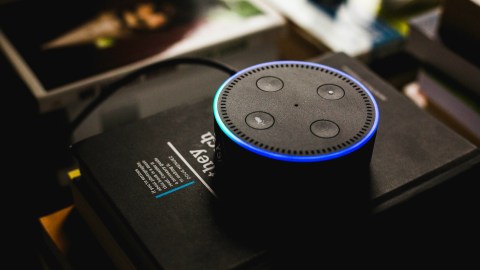Hackers discover way to hijack Amazon Echo and spy on unsuspecting users

Smart speakers like Google Home and Amazon Echo are becoming increasingly popular in the U.S. About 39 million Americans regularly use these devices, which can do everything from play music, fetch a weather forecast and even order a pizza. The devices are able to perform those tasks because of voice-activation technology that triggers various scripts at the mere utterance of a word like ‘Alexa’.
But that same voice-activation and recording technology has alarmed many security experts over the years who fear it could be exploited by hackers seeking to listen in on unsuspecting targets. Recently, a group of Chinese hackers figured out how to do just that.
At the DEFCON security conference in Las Vegas on Sunday, researchers Wu Huiyu and Qian Wenxiang demonstrated how they discovered a way to hijack the second-generation Amazon Echo by exploiting a series of bugs within the device’s hardware and software.
The vulnerabilities shouldn’t alarm Echo users because they’ve since been fixed by Amazon, and the attack required rather extensive technical expertise to execute. Still, the attack arguably represents the most successful breach of a smart speaker system to date.
“After several months of research, we successfully break the Amazon Echo by using multiple vulnerabilities in the Amazon Echo system, and [achieve] remote eavesdropping,” the hackers wrote to WIRED. “When the attack [succeeds], we can control Amazon Echo for eavesdropping and send the voice data through network to the attacker.”
The team’s attack worked like this: First, the researchers removed the flash chip from an Echo unit, modified the chip and reinserted it into the unit. Then, assuming the researchers could get their modified Echo connected to the same Wi-Fi network as the target’s Echo, they showed how they could exploit a software component of Amazon’s speakers, called Whole Home Audio Daemon, to eventually take control of the target Echo.
The attack would theoretically enable a third-party to record and transmit audio from an Echo without the target ever knowing their device had been hijacked.
“After a period of practice, we can now use the manual soldering method to remove the firmware chip … from the motherboard and extract the firmware within 10 minutes, then modify the firmware within 5 minutes and [attach it] back to the device board,” the team told WIRED. “The success rate is nearly 100 percent. We have used this method to create a lot of rooted Amazon Echo devices.”
A spokesperson for Amazon told WIRED that “customers do not need to take any action as their devices have been automatically updated with security fixes,” and that “this issue would have required a malicious actor to have physical access to a device and the ability to modify the device hardware.”
It’s not the first time vulnerabilities in Echo units have been identified. One of the most recent demonstrations came in April of this year when the cybersecurity company Checkmarx showed it was able to tweak an Echo so that it keeps ‘listening’—and, therefore, recording—long after the user had said the activation word ‘Alexa’. That exploit, which has since been fixed by Amazon, effectively turned the unit into a surveillance device, though the team said it was unable to figure out how to turn off the unit’s blue light-ring.





